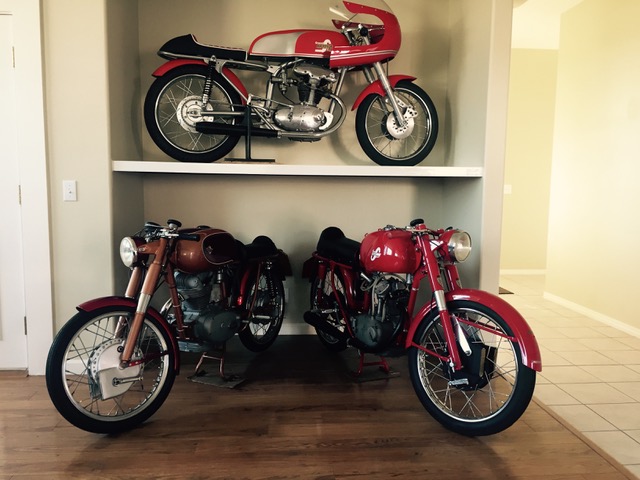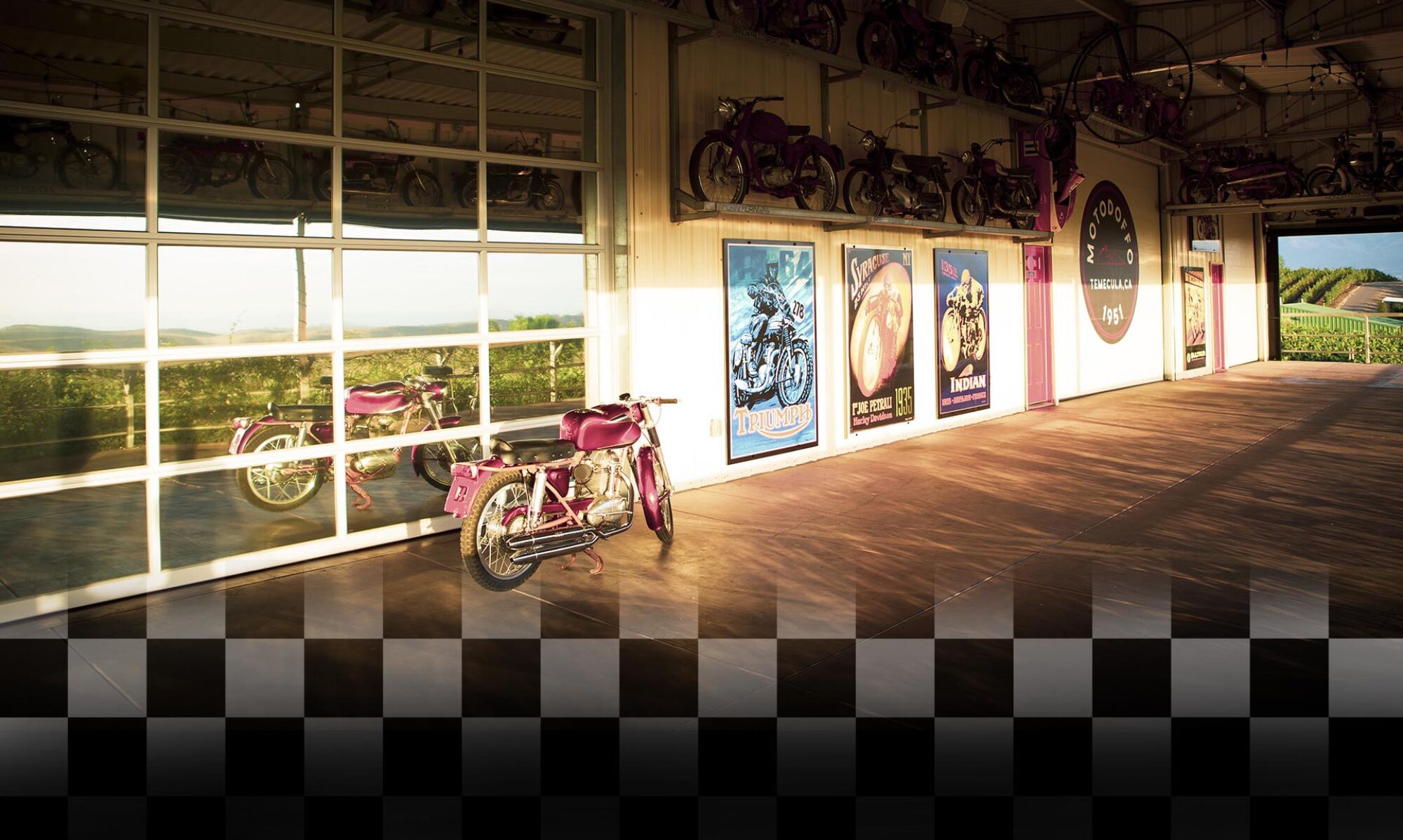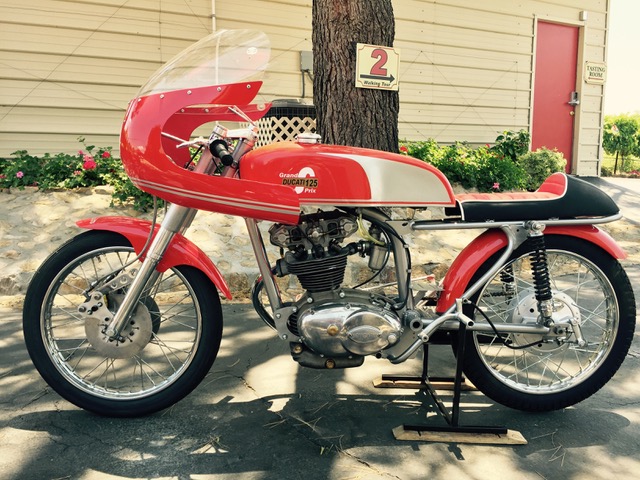“It was love at first sight,” remembers Marcelo Doffo. “I had seen the real bike at a meet in Italy, and then years later one showed up at the Mecum auction in Las Vegas.” The only problem was the price tag, as these extremely rare machines can fetch up to $100,000. “There are not too many out there available to purchase, unless you’re willing to spend some serious money. So I decided to build my own.”
And so it was that Marcelo embarked on building his own replica of one of Ducati’s rarest and most unique grand prix bikes. “A Spanish-built 5-speed Bialbero motor showed up on eBay in Italy. It was very rare since all the 125s were 4-speed, but there it was for sale with no head. It was an easy purchase.”
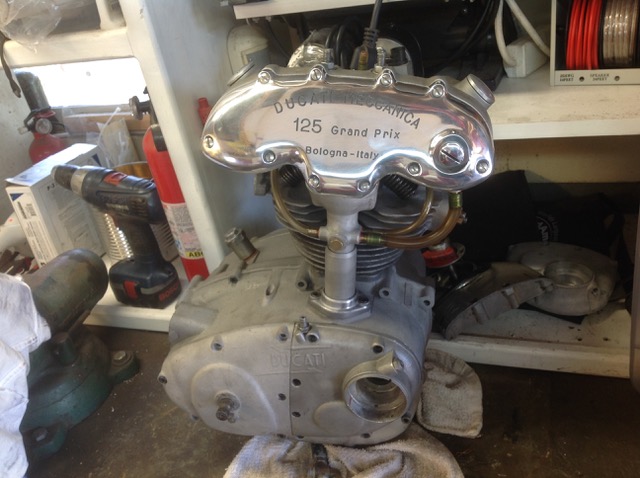
What makes this motorcycle so unusual is its massive twin-cam cylinder head, a design inspired by the Marianna’s single overhead cam that was driven by a vertical shaft and bevel gears. Ducati produced a very limited number of these machines and made them available primarily to racers and privateers, and the Bialbero (twin-cam) soon was replaced by the desmodromic trialbero (triple-cam) design that contributed to Ducati’s continued racing success.
Marcelo had already come across an Italian enthusiast who had built some dual cam heads, so Marcelo went to Italy to track him down and have him build the Bialbero head. With the engine and transmission now secured, the build could begin.
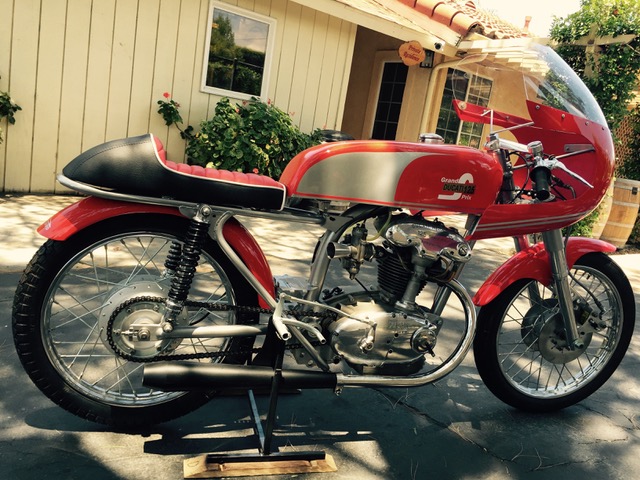
Marcelo pulled the front disc brakes and suspension from another bike and found a suitable frame in his collection. After some modifications, he added a gas tank, wheels and fairings. Then came fabrication and upholstering of the seat and an immaculate paint job, and the bike was completed about a year after the project began.
“I still haven’t fired it,” Marcelo says with a grin. “The bike should run because everything is in place, but after the first time it’s never quite the same, so I’m saving that moment.”
This Ducati Bialbero replica adorns the label of the 2019 MotoDoffo Royal Tinto, with original artwork by Roland Sands.
